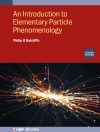This book explores recent developments in electrically conducting graphene-containing polymer composites for electromagnetic interference (EMI) shielding and flame-retardant applications. It emphasizes the exceptional performance of graphene and graphene-based materials in these composites. The comprehensive overview covers the fundamental principles of EMI shielding, flame retardancy, and polymer composite processing, addressing critical aspects related to the development of advanced graphene-containing materials. The book aims to fill the gap in reviews that specifically focus on EMI shielding and flame retardancy fundamentals, processing techniques, and application-specific developments.
An important aspect discussed is the customization of electrical properties through blend morphology modification and selective localization of graphene-based nanofillers. This aspect has not been adequately covered in previous articles or books. By addressing this research gap, the book becomes an essential resource for researchers seeking a deeper understanding of molecular aspects and result interpretation. With a focus on processing advanced functional composite materials for EMI shielding and flame retardancy, the book promotes a molecular understanding of the subject matter. It is expected to pave the way for future advancements in advanced polymer composites. Researchers and scholars will find this book invaluable as it provides a holistic overview of fundamental concepts and insights into ongoing research intricacies.
Table des matières
A propos de l’auteur
Suprakas Sinha Ray was born in 1973 in India and completed his Ph D studies at the University of Calcutta in 2001, and then postdoctoral fellow at Toyota Technological Institute, Japan and Laval University, Canada studying the structure-property relationship in nanoclay-containing polymer nanocomposites. He started working on fundamental understanding to real applications of polymer-based nanostructured materials when he joined (October 2006) the CSIR as a group leader. These studies advanced and broadened when he was appointed as a chief researcher and founding director of the DSI-CSIR Nanotechnology Innovation Centre and growing to the present time with scientists, engineers, technologists, postdoctoral fellows, students, collaborators and industrial partners worldwide. Currently, more than 115 researchers, engineers and technologists are working at the Centre. He is one of the most active authors (Cited more than 34000 times, h-factor of 77, Google Scholar) in the field of polymernanocomposite materials and his work has been featured on various international journal cover pages on 17 occasions. Recently, he has been rated as the Top 1% of most impactful and influential scientists (Chemistry, Materials Science and 22 Science disciplines) by Thomson Reuters Essential Science Indicators. In 2011, he also has been rated as a Top 50 high impact chemist in the world (Feb. 2011, Thomson Reuter, probably youngest researcher in this list, 1.2 mil Chemists). So far he has given more than 65 plenary/keynote/invited presentations in various international conferences and organized/co-organized several international conferences. Prof. Ray is the author of 9 books, co-author of 8 edited books, 30 book chapters on various aspects of polymer-based nano-structured materials & their applications, and author and co-author of more than 505 articles in high-impact international journals, 14 articles in peer-review international conference proceedings; 30 articles in national and international conference proceedings. He also has 7 patents (registered or filled) and 10 new demonstrated technologies (commercialized) shared with colleagues, collaborators, and industrial partners. So far, his team commercialized 19 different products. Over the last 15 years, he has trained 23 postdoctoral fellows, produced 43 Ph D and 23 Master students under his direct supervision. His honours and awards include Most Prestigious 2016 National Science and Technology Award (NSTF); Prestigious 2020 CSIR-wide career-achievement award; Prestigious 2014 CSIR-wide Leadership Award; Prestigious 2014 CSIR Human Capital development award; Prestigious 2013 Morand Lambla Awardee, International Polymer Processing Society, USA; Distinguish Visiting Professor, King Abdulaziz University, Kingdom of Saudi Arab (2012); Extraordinary Professor, University of Pretoria, South Africa (2013); Distinguished Professor of Chemistry, University of Johannesburg, South Africa (2012); Global Star Award 2011 from the Engineering ceramic division, the American Ceramic Society; CSIR MSM Prestigious Established Researcher Award (2010); Adjacent Professor, Free State University, South Africa (2009); Prestigious CSIR President’s Award (2008); CSIR MSM Director’s award (2008); JSPS Postdoctoral Fellowship from the Japanese Government (2002). He is an Editorial Board member of the ACS Omega and Macromolecular Materials and Engineering.Lesego Tabea Temane received her M-Tech in Chemical Engineering from the University of Johannesburg, South Africa. She is a Senior Technologist at the Centre for Nanostructures and Advanced Materials, DSI-CSIR Nanotechnology Innovation Centre, Council for Scientific and Industrial Research, Pretoria, South Africa. Her research focuses on synthesizing, processing, and characterizing advanced 2D materials and nanostructured polymeric materials.
Jonathan Tersur Orasugh received his Ph.D. in Polymer Science and Engineering (Nanoscience and Nanotechnology)from the University of Calcutta, India. He is currently working as a Researcher at the Department of Chemical Sciences, University of Johannesburg, and associated as a senior researcher at the Centre for Nanostructures and Advanced Materials, DSI-CSIR Nanotechnology Innovation Centre, Council for Scientific and Industrial Research, Pretoria, South Africa. His research focuses on processing and characterizing of 2D materials, polymer composites, biopolymer-based immiscible polymer blends for water and biomedical applications, particularly drug delivery and tissue engineering.












